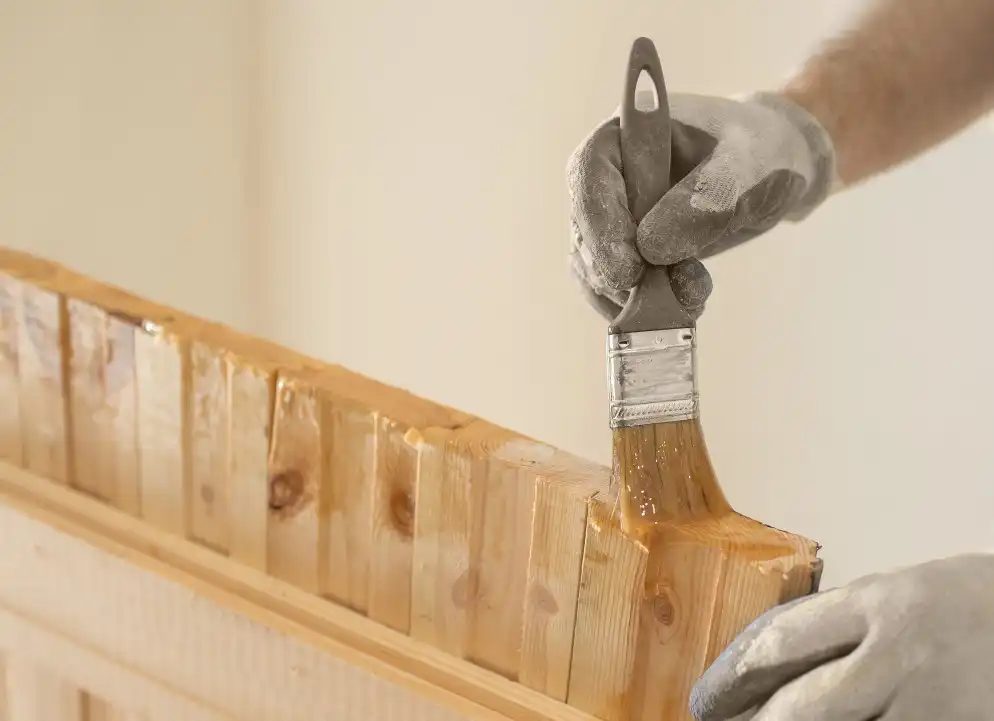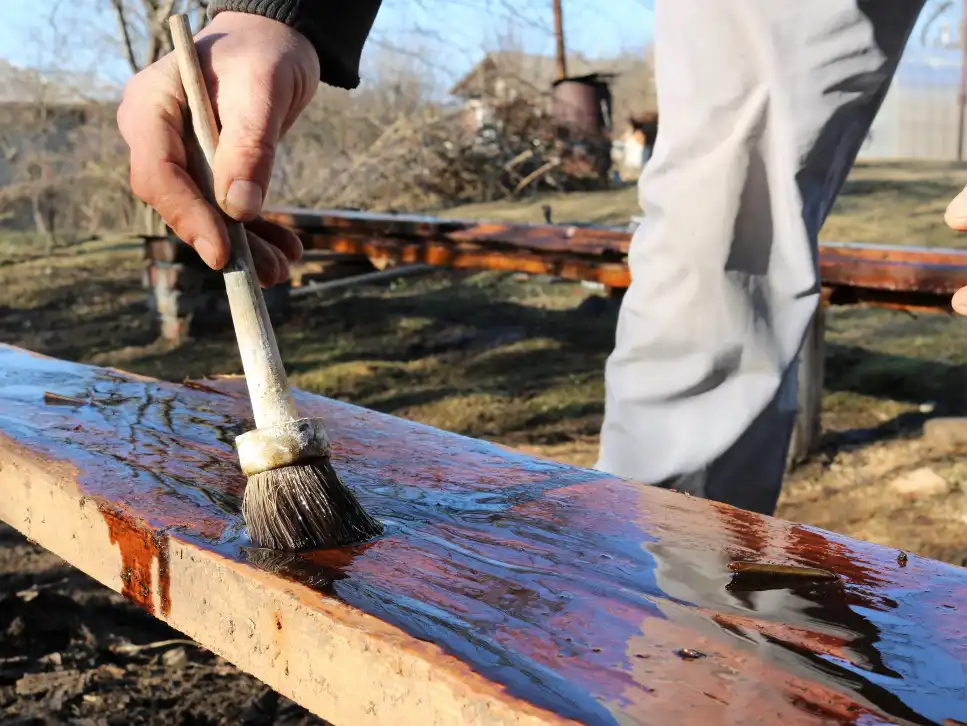Should I oil or varnish wood?
Wood oil and Varnish are two of the most prevalent finishes for hardwood. Both coatings provide a glossy layer of protection. The fundamental distinction between wood oil and Varnish is that wood oil must permeate the wood to adhere, whereas Varnish adheres to the top layer of the wood. Wood oil enters the wood deeply, while Varnish remains on the surface.
As a result, Varnish has a higher gloss, dries faster, and thus preserves the wood better than wood oil. If cared for properly, Varnish lasts longer on wood, up to ten years. Every two years or fewer, wood oil would need to be re-coated. As a result, depending on the project you’re working on, you’ll need to use one of them. That is, if you value durability, you should choose to vanish.
Is wood oil the same as Varnish?
Varnish is not the same as wood oil. Varnish has a glossier appearance than oil. On the other hand, oil is a penetrating finish, meaning it penetrates the fibers of a solid wood paddle before hardening and curing. It applies a thinner coat than Varnish, isn’t as lustrous (particularly when wet), and dries to a more matte look than Varnish. Different forms of penetrating oil finishes are known as wood oil. Linseed oil, Tung oil, Teak oil, Danish oil, Mineral oil, and Walnut oil are examples of wood oils.

Many of these oils are plant-based and come from various plant parts. Linseed oil, for example, comes from the seeds of the flax plant, but Tung oil comes from the Chinese Tung tree. As a result, wood oil is a standard natural wood treatment.
As a natural oil, Wood oil is well-known for penetrating deeply into the wood, allowing it to preserve the wood from the inside out. Wood oil does not crack or peel off like other finishes since it penetrates. However, wood oil fades quickly and requires reapplication every two years or fewer.
On the other hand, Varnish is a powerful and long-lasting sealer or topcoat that protects wood and wood stains. Varnishes come in various varieties, but they all have a lot in common. Because there are many types of wood varnish, the term “varnish” is a family name. Spirit varnish, polyurethane varnish, exterior Varnish, acrylic Varnish, and so on are all on the list.
All varnishes have one thing in common: they are topical finishes. On the other hand, Varnishes do not enter wood as thoroughly as wood oils. Varnish adheres to the wood’s top layer. Because Varnish does not penetrate, the top layer is thicker and more durable, allowing Varnish to protect the wood. Varnish has a lustrous sheen to it that repels moisture. Exterior Varnish, in particular, is highly water-resistant.
Can you use oil instead of Varnish?
For a variety of reasons, oil can be helpful instead of Varnish. Wood oil is a protective and aesthetic finish for bare wood and timber that can be applied directly to the surface. Wood oils nourish the wood from within and give a deep penetrating, long-lasting, and cost-effective finish to wooden surfaces, refilling woods that have dried up due to exposure or neglect. Traditional wood oils (Danish, Teak, Linseed) and newer, developed, next-generation wood products (Rubio Monocoat, Osmo, Lacq) are user-friendly and combine the benefits of oils, waxes, and varnishes in one tin.

Unlike high-VOC wood varnishes, wood oils are primarily natural products that are simple to apply and preserve over long periods. Osmo’s sophisticated wood finishes come from pure and refined natural resources, such as sunflower, soya, linseed, thistle oils, and hard waxes like carnauba and candelilla waxes. Because the dry finish is safe for humans, animals, and plants, it’s ideal for children’s toys because it’s resistant to perspiration and saliva.
You can place wood oils over the top of wood stains in some cases and with proper preparation. Light rubbing with fine sandpaper usually is required for this – always research and test first.
Should you oil wood before varnishing?
Before applying a wood varnish, you must eliminate any existing varnish, waxes, oils, wood stains, dust, filth, grease, uneven spots, and sticky material, regardless of the product you choose. Keep away dust and debris out of your workstation; otherwise, they will accumulate on the surface of the wood and the newly applied Varnish, ruining the luster and smooth finish.
Every wood varnish product is unique in its way. When it comes to varnishes, taking shortcuts almost always means you won’t obtain the high-quality finish you desire. Utilize a brush with natural instead of synthetic bristles for oil-based finishes and synthetic brushes for acrylic or water-based varnishes (commonly known as “nylon” brushes). However, you can use rollers or rags for both types of finishes.
Remove any previous varnish or finish with an appropriate paint and Varnish remover/stripper before varnishing. Sand the wood to eliminate any surface defects, then wipe away any dirt with a moist cloth and let it dry.
What is the difference between wood oil and varnish?
In today’s market, there are a variety of precise wood treatments to choose from. Polyurethane varnish and tung oil stain are two of the most popular. Tung oil stain comes from the squeezed seed extract of the tung tree, whereas polyurethane is a manufactured material. This article compares and contrasts the two in terms of advantages and disadvantages, application and equipment, and maintenance and clean-up.
Polyurethane varnish is a liquid plastic that goes on top of the wood rather than within it. It takes some skill to implement, but amateurs may use it if they do their homework. The ultimate product is a protective covering that is long-lasting and high-gloss.
You can put the finish over raw and recently colored timber and older Varnish if you carefully sand the wood. It can be maintained using a standard wax dust spray on furniture and cabinets. The most significant disadvantage of Varnish is that it will crack or peel with time, and water and mold will discolor the wood beneath it. Polyurethane is the finest choice for most external wood surfaces that are susceptible to moisture, fungus, or decay, and it is a must-have in any marine climate.
Tung oil is mainly used on furniture, cabinets, interior doors, and trim, and it is straightforward to apply, re-coat, and maintain. It offers a less glossy finish than Varnish but a velvety feel and a noticeable grain. Unlike polyurethane, it permeates the wood, so the coating never cracks or peels. Another significant benefit is that you can reapply it without sanding. A dry towel wipe-down is sufficient for upkeep, and never use a wax spray because it will inhibit reapplication.
In some ways, Varnish is similar to nitroglycerin in that it reacts when disturbed. On the other hand, Wood oil displays its advantage through tung oil. A fine bristle brush designed for oil-based paints, a small pail with a handle, paint thinner lint-free rags like old cotton t-shirts, a wire bristle brush, 220 sandpaper, and a lot more patience are necessary for applying polyurethane varnish.
All required are a cut bucket, high-gloss tung oil, staining sponges (a little sponge covered in terry fabric), clean cotton rags, and high-gloss tung oil. A blunt screwdriver coated with a rag can also remove extra oil from tight corners, depending on your surface.
To clean a varnish brush, dip the entire brush in paint or lacquer thinner in a clean bucket and work the brush against the pail’s bottom. With fingers and a wire brush, push the thinner through the bristles, focusing on the base of the bristles.
When cleaning up oil, however, place the oily rags and sponges in a plastic bag and throw them away. If necessary, clean yourself with thinner dish soap and water (an ammonia-based window cleaner eliminates the scent of thinner). That is why using oil is so much more convenient.
Can you use oil instead of Varnish?
Varnish is a more durable product than an oiled finish; it is certainly more durable. As a result, using oil instead of Varnish should not be a top priority.
On the other hand, Oils are highly durable and provide a more natural aspect to flooring and stairwells. Also, oiled finishes can be simple to maintain and restore if damaged, such as by dog claws.
If you choose to use Varnish, Manns Extra Tough Floor Varnish is a good choice, and there are ample amounts available for testing. Because Hickory is a somewhat hardwood, this may be a better alternative than the Osmo Wood Wax Finish Extra Thin.
- Pyrography Techniques for Beginners: Textures and Shading - January 23, 2024
- Troubleshooting Jointer Issues: Why is Your Jointer Not Flattening Wood? - October 11, 2023
- Unlocking the Secrets of Jointing to Increase Width - September 29, 2023
